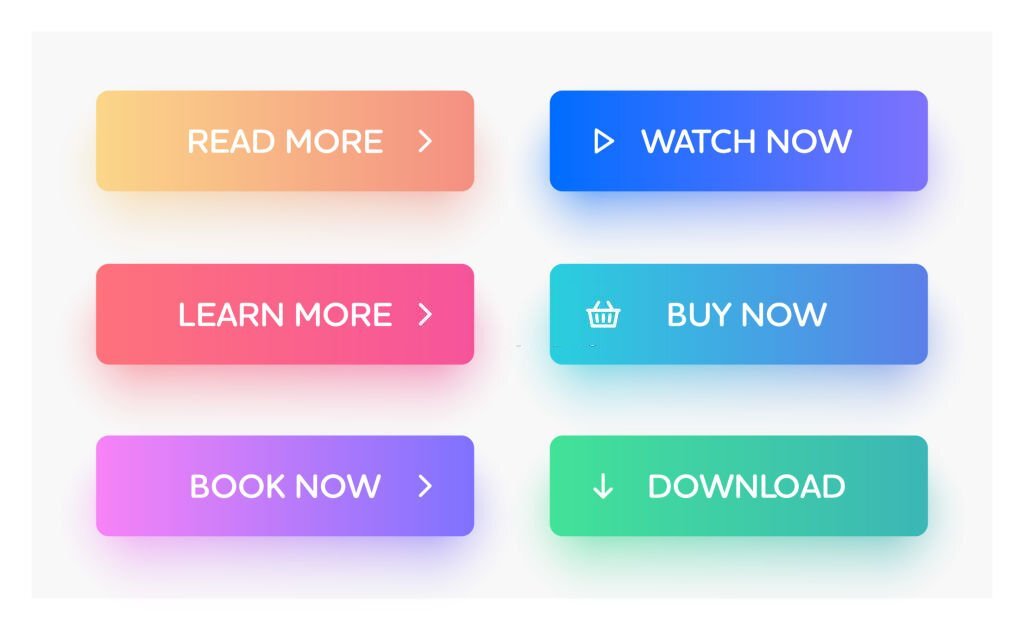At the core of digital marketing lies conversion optimization: driving conversions is every business’s ultimate goal. From selling products, generating leads, or encouraging user engagement – calls to action (CTA) provide essential guidance towards the desired action within your audience – thus serving as key elements in conversion optimization strategies.
But, in an age when online users are exposed to so many distractions and marketing messages, creating CTAs that truly stand out and generate responses can be an immense challenge. It is where persuasive marketing techniques come into play – by drawing upon principles like psychology, copywriting, and design you can craft irresistible calls to action that encourage your target audience to take action!
In this blog post, we will delve into the art of crafting irresistible calls to action and explore their ability to drive conversions for your business. We’ll reveal key components that make CTAs effective as well as marketing strategies to boost their impact. Whether you are an experienced marketer or new to the space, these insights and actionable tips will arm you with tools for conversion optimization.
Understanding Calls to Action (CTAs)
CTAs serve as the link between your marketing efforts and the action you want your audience to take. They act as direct invitations to prompt users to convert, purchase, or interact with your business in some capacity. Understanding these elements of a CTA is integral in crafting messages that resonate with target audiences.
Definition and Purpose of CTAs
At its core, a call to action is an instruction or prompt that encourages users to take an intended action. It could be as simple as adding buttons with text such as “Buy Now,” “Sign Up,” and “Learn More.” CTAs should be strategically integrated into marketing materials, websites, landing pages, emails, and advertisements to drive users toward your conversion goal and generate greater sales conversion.
CTAs serve two key purposes in user journeys. First and foremost, CTAs aim to spur action and facilitate an effortless user journey. By providing clear directions and opportunities for engagement at every step of the conversion funnel, they also act as compelling invitations – creating urgency or desire to encourage users to take the desired actions.
Different Types of CTAs
CTAs can take various forms, depending on the platform and context in which they are used. Here are some common types of CTAs:
Buttons: These are the most prevalent form of CTAs, usually designed as clickable buttons which stand out from the surrounding content. They often feature concise and action-oriented text to prompt users to take a specific action.
Links: CTAs can also be implemented as hyperlinked text or phrases within your content. They are embedded within the text and provide a seamless transition to the desired action or destination when clicked.
Banners and Pop-ups: These are larger and more visually prominent CTAs that appear as overlays on websites or within digital ads. They demand attention and can be effective for capturing user attention and driving conversions.
Form Submissions: CTAs can be integrated into forms, urging users to submit their information or complete a registration process. These CTAs are often accompanied by persuasive messaging highlighting the benefits of providing the requested information.
The Importance of Effective CTAs
Any social media agency in Miami will tell you effective CTAs play a pivotal role in driving user behavior and increasing conversions. CTAs serve as signposts, helping ensure users don’t become disoriented during their journey through your website or marketing channels. Well-crafted CTAs can capture attention, generate interest, and motivate users to take desired actions leading to increased conversions, sales, or engagement – ultimately promising greater conversions, sales, or engagement rates.
With an understanding of CTAs and their role in conversion optimization, you can start to take full advantage of their power to influence user behavior effectively. In the following sections, we will investigate key elements that make CTAs compelling as well as effective marketing strategies to boost their effectiveness even further.
Key Elements of Compelling CTAs
To craft irresistible CTAs and drive conversions, it is key to note the specific elements which make them captivating and engaging. By including these features in your CTAs, our Miami social media agency draws people in, inspires action, and maximizes conversion rates for our clients.
Clear and Concise Messaging
One of the cornerstones of creating effective CTAs is communicating your message clearly and succinctly. Use action-oriented language that exudes urgency and encourages immediate action. Keep the text short and impactful, emphasizing benefits or value proposition of taking this particular course of action. Avoid vague or generic language in favor of specific and compelling language that resonates with your target audience’s needs and desires.
Visual Appeal and Design
As a successful advertising agency in Miami, Florida, we know visually appealing CTAs play an instrumental role in capturing attention and encouraging interaction. Choose vibrant hues that stand out from surrounding content, consider color psychology to choose hues which elicit desired emotions or associations, use fonts that are easy to read while remaining on brand, and include visually captivating graphics or icons to complement your message and direct people toward CTAs.
Placement and Visibility
Strategic placement of calls-to-action on your website or marketing materials can have a tremendous effect on their effectiveness. Use placement to guide user attention naturally across pages; typically placing CTAs above the fold (visible without scrolling) or at the end of content sections yields positive results. Furthermore, ensure your CTAs are visible on all devices–especially mobile–for optimal user experiences on all screen sizes.
Offer Value and Benefits
Your CTA should clearly communicate the value and benefits users will derive by taking the desired action. Focus on specific advantages, solutions, or outcomes your audience should expect as ways to create compelling reasons for them to engage with your CTA. Providing incentives or rewards such as limited-time discounts, free trials, or exclusive content to further accentuate these perceived values and motivate users to act promptly.
By including these key components in your CTAs, you can make them more engaging and persuasive. You can even take these a step further by applying persuasive marketing techniques that utilize psychology and consumer behavior.
Crafting Persuasive CTAs
Crafting effective CTAs involves employing marketing techniques that tap into the psychology of your target audience as well as their motivations, desires, and emotions. Understanding human
behavior allows you to craft CTAs that resonate deeply and compel users to take action. Here are some effective marketing strategies you should keep in mind when crafting CTAs.
Addressing Pain Points and Solutions
Effectively persuading users to take action requires understanding their pain points, needs, and desires. Tailor your calls to action (CTAs) specifically towards these concerns while offering your product or service as the solution – use persuasive language that conveys how your offering can alleviate challenges, enhance lives, or fulfill aspirations goals – showing empathy while offering tangible solutions can create strong emotional bonds between customer and provider that increase conversion rate significantly.
Creating a Sense of Urgency
One of the most effective persuasive techniques for marketing in Miami is creating a sense of urgency around your CTAs. Instilling fear of missing out or the expectation of immediate benefits will motivate users to act swiftly. You could try including time-limited offers, countdown timers, or limited availability statements as ways to convey this urgency, or using action verbs that emphasize immediacy so users take immediate action without delay.
Using Social Proof and Testimonials
Social proof plays an integral part in shaping consumer behaviors. Integrate social proof elements into your CTAs to build trust and credibility with consumers by including testimonials, reviews, or case studies from happy customers; or showcase the number of users who have already taken desired actions such as “Join over 10,000 satisfied customers.” By showing real world evidence of value and impact of offerings through CTAs, you can increase their persuasive power.
Personalization and Targeting
Personalizing CTAs to target user segments or individual preferences can significantly increase their effectiveness. Leverage data and insights to tailor CTAs specifically to particular groups or individuals. Making the connection directly between the interests, behaviors, or demographics of your users and increasing conversion likelihood is easier with targeted CTAs that speak directly to their interests, behaviors, or demographics. Use dynamic content or personalization tools to deliver tailored CTAs based on user attributes or past interactions for maximum impact!
By employing these persuasive marketing techniques in your calls to action (CTAs), a social media agency in Miami can increase their effectiveness and drive higher conversion rates for your business. However, it’s key to constantly test and iterate them to maximize effectiveness – in this section we’ll look at why testing and optimizing CTAs are necessary for optimal results.
Testing and Optimizing CTAs
Creating compelling CTAs is not a one-time task; rather, it requires ongoing testing and optimization. Monitoring performance metrics of your CTAs and making data-driven adjustments can maximize effectiveness and drive higher conversions. Here are some key steps involved with optimizing CTAs.
Importance of A/B Testing for CTAs
A/B testing is an invaluable method for comparing and assessing the performance of various variations of CTAs. A/B testing involves creating multiple versions of your CTA and randomly presenting it to users to see which version performs better. By testing elements like text, design, color, placement, size, etc., you can identify variations that generate higher conversion rates allowing for informed decisions based on real data rather than making assumptions or guesswork-driven decisions.
Measuring and Analyzing CTA Performance
To successfully optimize CTAs, it’s essential to set clear metrics and monitor their performance. Tools like Google Analytics or heatmaps can be used to track metrics like click-through rates, conversion rates, bounce rates, engagement, and clickback rates. Analyze this data to uncover patterns, trends, and areas for improvement and understand user interactions with CTAs as well as which variations perform better. This knowledge can provide key insights to inform optimization efforts and uncover insights to guide future efforts.
Iterative Improvements Based on Data-Driven Insights
Based on your A/B testing and analysis results, make iterative improvements to your CTAs. Make changes to elements that showed potential for improvement such as text, design, or placement and test one at a time to isolate its impact and accurately measure its effectiveness. Monitor their performance once optimized and continue refining them to achieve even greater results over time – optimization should always remain an ongoing process requiring consistent testing and refinement for long-term success.
Staying Up-to-Date with Emerging Trends and Best Practices
Staying abreast of emerging trends and best practices in CTA design and optimization is critical in staying competitive and effective with consumer behaviors and preferences. Monitor industry resources, case studies, and expert insights for optimal conversion rate performance as you experiment with new techniques to keep your CTAs engaging with users.
By continuously testing, analyzing, and optimizing CTAs you can enhance their performance and drive higher conversions. Keep in mind that what works for one audience or context may not work for another so it is key to utilize data specific to your target audience as well as your business objectives when optimizing these calls to action (CTAs).
Conclusion
Crafting irresistible CTAs is essential to conversion optimization and persuasive marketing. By understanding their key elements and taking advantage of persuasive techniques to use in their creation and constant testing/optimization of performance, you can drive higher conversion rates while meeting business goals more quickly.
Implement clear messaging, visually appealing designs, strategic placement, and compelling value propositions into your CTAs to engage users effectively and make a connection with them. Consider your audience’s pain points when creating CTAs; create urgency via social proof; personalize content so it resonates deeply; use A/B testing to measure their performance before iterating improvements based on data-driven insights.
Remember optimizing CTAs is an ongoing process. With help of a marketing company in Miami, you can stay abreast of trends and continuously adapt your CTAs to reflect consumer behaviors as they shift. Through adopting strategies dedicated to optimizing your CTAs, you’ll maximize their effectiveness and drive conversions with every interaction – now it’s time to put these insights into action and witness their transformative effects on your business!





